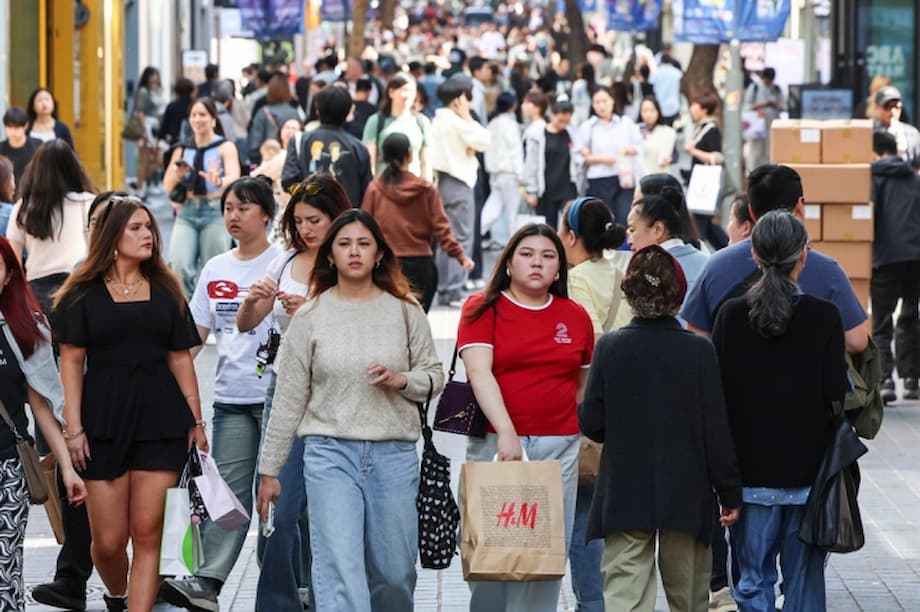South Korea’s New Visa-Free Policy for Chinese Tour Groups: A Tourism Game Changer
In a landmark move aimed at revitalizing its tourism sector and strengthening diplomatic ties, South Korea has announced a temporary visa-free entry policy for Chinese tourist groups. Starting September 29, 2025, and running through June 30, 2026, organized groups of Chinese travelers will be able to visit South Korea without the need for a visa. This policy, which comes just ahead of China’s major National Day holiday and the Asia-Pacific Economic Cooperation (APEC) summit in Gyeongju, is expected to have wide-ranging economic, diplomatic, and cultural impacts.
- South Korea’s New Visa-Free Policy for Chinese Tour Groups: A Tourism Game Changer
- Why Is South Korea Granting Visa-Free Entry to Chinese Tourists?
- How Will the Policy Work?
- Economic Impact: A Boon for Tourism, Retail, and Beyond
- Diplomatic Context: A Thaw in China-South Korea Relations?
- Challenges and Opportunities: Will the Policy Deliver?
- In Summary
The decision marks the most significant easing of entry restrictions for Chinese tourists since the COVID-19 pandemic and follows China’s own move in November 2024 to grant visa-free entry to South Korean citizens. The reciprocal nature of these policies signals a warming of relations between the two East Asian neighbors, whose ties have been tested in recent years by geopolitical tensions and pandemic-related travel bans.
Why Is South Korea Granting Visa-Free Entry to Chinese Tourists?
South Korea’s tourism industry has long relied on Chinese visitors as a key source of revenue. Before the pandemic and the 2017 THAAD missile-defense system dispute, Chinese tourists made up the largest share of foreign arrivals, peaking at 8 million in 2016. However, numbers plummeted after China imposed unofficial restrictions on group travel to South Korea in response to the THAAD deployment, and the COVID-19 pandemic further decimated international travel.
By 2024, the number of Chinese visitors had rebounded to 4.6 million, accounting for 28.1% of all inbound tourists. In the first half of 2025 alone, 2.53 million Chinese tourists visited South Korea, a 13.9% increase over the previous year. Yet, these figures still lag behind pre-2016 levels. The new visa-free policy is designed to accelerate this recovery, with the government targeting 5.36 million Chinese arrivals in 2025, closing in on the 6.02 million recorded in 2019.
Government officials, including Prime Minister Kim Min-seok, have emphasized that the policy is expected to “generate further demand for inbound travel and have a major effect on boosting domestic consumption, including stimulation of regional economies.” The timing is strategic, coinciding with China’s National Day holidays (October 1-7) and the APEC summit, both of which are expected to draw large numbers of international visitors.
How Will the Policy Work?
The visa waiver applies specifically to Chinese tourists traveling in organized groups arranged by accredited travel agencies. This is a significant expansion from previous policies, which only allowed group visitors visa-free access to Jeju Island for up to 30 days. Now, Chinese tour groups can enter South Korea through any port of entry and travel nationwide without a visa.
While the government has yet to announce the maximum duration of stay for these group tourists, the policy is clear in its intent to simplify travel procedures and encourage more spontaneous and flexible visits. The Ministry of Culture, Sports, and Tourism has also indicated that the program will target solo tourists aged 20-30 from major Chinese cities like Beijing and Shanghai, as well as themed group tours from smaller cities focusing on sports, gastronomy, beauty, religion, and cultural experiences.
Fast-Track Immigration and Medical Tourism Initiatives
In addition to the visa waiver, South Korea is introducing a trial fast-track entry system for foreign visitors attending international conferences. The threshold for events to qualify for expedited immigration clearance has been lowered from 500 to 300 international participants, making it easier for business and academic travelers to enter the country quickly. This move is part of a broader strategy to position South Korea as a top-tier destination for meetings, incentives, conferences, and exhibitions (MICE).
The government is also easing requirements for institutions seeking certification to attract foreign medical tourists, aiming to boost the country’s burgeoning medical tourism sector. Agencies that refer 500 or more foreign patients will now be able to handle electronic visas, streamlining the process for international patients seeking treatment in South Korea.
Economic Impact: A Boon for Tourism, Retail, and Beyond
The economic stakes are high. According to the Bank of Korea, every additional million Chinese tourists could lift the country’s GDP by up to 0.08 percentage points. In 2024, foreign visitors spent a record 9.26 trillion won (about $6.9 billion) in South Korea, a 43% increase over the previous year. The tourism industry accounted for 4.3% of the nation’s economy, according to the World Travel & Tourism Council.
The announcement of the visa-free policy has already sent ripples through South Korea’s stock market. Shares of department stores, casinos, hotels, and beauty product makers surged on hopes of increased Chinese demand. Hyundai Department Store shares jumped 7.1%, Hotel Shilla rose 4.8%, casino operator Paradise climbed 2.9%, and Hankook Cosmetics surged 9.9% following the news.
Foreigners-only casinos, which rely heavily on Chinese high rollers, have seen a significant uptick in revenues. Paradise Co, the largest such operator in Korea, reported a more than 50% increase in casino revenue in March 2025 compared to the previous year, reaching 81 billion won ($58 million).
Retail, Duty-Free, and Dining Industries Poised for Growth
Chinese tourists are known for their high spending on shopping, dining, and entertainment. The visa-free policy is expected to directly benefit South Korea’s retail, duty-free, and dining industries by simplifying travel and encouraging longer stays. Travel platforms like Trip.com Group have reported a surge in searches and bookings for group tours to South Korea, with Qunar.com noting a 70% increase in search volume for Seoul within half an hour of the policy announcement.
Diplomatic Context: A Thaw in China-South Korea Relations?
The visa-free policy is not just about economics—it’s also a diplomatic signal. Relations between South Korea and China have been strained in recent years, particularly after the deployment of the U.S. THAAD missile-defense system in South Korea in 2017, which led to unofficial Chinese sanctions on Korean businesses and a sharp drop in Chinese tourism.
However, the election of liberal President Lee Jae Myung has brought hopes for improved ties. The reciprocal visa waivers—China’s for South Koreans in November 2024 and now South Korea’s for Chinese group tourists—reflect a mutual interest in rebuilding people-to-people exchanges and economic cooperation.
Chinese Ambassador to South Korea Dai Bing welcomed the decision, stating that it is “good news for Chinese travelers” and noting the rapid growth in bilateral exchanges since China’s own visa-free policy for South Koreans. The Chinese Embassy in Seoul emphasized that “strengthening friendly cooperation is in the best interests of both countries and their peoples.”
Prime Minister Kim Min-seok described the 2025 APEC Summit as “an important opportunity to boost tourism” and showcase South Korea’s openness to the world.
APEC Summit: A Catalyst for Tourism and Diplomacy
The timing of the visa-free policy is closely tied to the upcoming APEC summit, which will bring leaders from 21 economies—including China’s Xi Jinping and the U.S. President—to Gyeongju from October 31 to November 1, 2025. The summit is expected to draw thousands of delegates, media, and business leaders, providing a high-profile platform for South Korea to demonstrate its hospitality and global engagement.
Challenges and Opportunities: Will the Policy Deliver?
While the visa-free policy is widely expected to boost tourism and economic activity, challenges remain. Global economic uncertainties, potential geopolitical tensions, and the lingering effects of the pandemic could all impact travel patterns. Additionally, the policy’s focus on group tours may limit its appeal to independent travelers, who are an increasingly important segment of the Chinese outbound market.
Nevertheless, the government is optimistic. The Ministry of Culture, Sports, and Tourism is developing targeted marketing campaigns for young solo travelers from major Chinese cities and themed group tours from smaller cities. Korean airlines are ramping up capacity, with Korean Air, Asiana, and low-cost carrier Jeju Air all increasing flights to China to meet anticipated demand.
South Korea’s broader tourism strategy includes simplifying entry inspections for all foreign visitors starting next year and expanding the list of countries eligible for visa exemptions. Currently, more than 100 countries enjoy some form of visa-free access to South Korea, with stays ranging from 30 days to six months depending on the country.
Industry and Public Reactions
The tourism and retail sectors have responded enthusiastically to the policy. Industry experts say the move is a “reciprocal and mutually beneficial measure” that will promote in-depth tourism cooperation between China and South Korea. Travel agencies, hotels, and retailers are preparing for a surge in Chinese visitors, with many developing new products and services tailored to Chinese tastes and preferences.
Some observers caution that the policy’s success will depend on effective implementation, clear communication with travel agencies, and continued efforts to ensure the safety and satisfaction of visitors. The government has pledged to monitor the program closely and make adjustments as needed based on feedback from travelers and industry stakeholders.
In Summary
- South Korea will grant visa-free entry to Chinese tourist groups from September 29, 2025, to June 30, 2026, in a bid to boost tourism and strengthen diplomatic ties.
- The policy applies to organized group tours arranged by accredited travel agencies and marks the broadest easing of entry restrictions for Chinese visitors since the pandemic.
- The move is expected to benefit South Korea’s tourism, retail, hospitality, and entertainment sectors, with significant economic gains projected.
- The visa waiver is reciprocal, following China’s decision in November 2024 to grant visa-free entry to South Koreans, signaling a thaw in bilateral relations.
- Additional measures include fast-track immigration for conference attendees and support for medical tourism, as South Korea positions itself as a top destination for international visitors.
- The policy coincides with the APEC summit in Gyeongju, providing a high-profile opportunity for South Korea to showcase its hospitality and global engagement.
- While challenges remain, the government and industry are optimistic that the visa-free policy will accelerate the recovery of South Korea’s tourism sector and foster closer ties with China.












